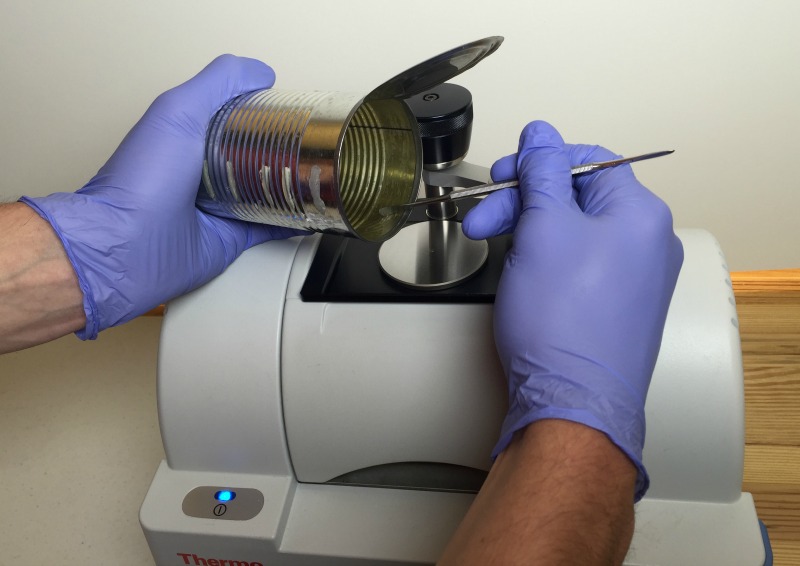
Sample Collection and Analysis
Pet food cans--21 for dogs and 39 for cats or kittens--were collected from consumers in Southeast Michigan in the summer of 2016 without attempting to represent all possible brands and recipes. The “best by” dates on the cans ranged from May 2017 to April 2020. The final set of cans included 23 brands and 60 varieties. Cans were thoroughly cleaned of food residue before analysis.
The analytical method used to identify coatings was identical to the method previously developed in our lab and described in “Buyers Beware: Toxic BPA and regrettable substitutions found in the linings of canned food” (Ecology Center et. al 2016). The method uses Fourier transform infrared (FTIR) spectroscopy, a tool long used to determine the identity of unknown polymeric materials.
Samples of can coatings were obtained by using a metal tool to scrape the coating from the interior of each can body and, separately, from the top lid. The coating type frequently differs between the body and lid of the same can. Pieces of removed coating were placed on the sample stage of the FTIR spectrometer (Thermo Scientific Nicolet iS5 in attenuated total reflection mode) and a spectrum was obtained. Thus, two spectra were obtained from each can.
To identify unknown coatings from the FTIR spectra, we used a custom library of spectra we created for our earlier study on food can linings. Five coating types—polymeric resins—were identified in the pet food cans. These five coating types are BPA-based epoxy, PVC copolymer, polyester resin, acrylic resin, and oleoresin.

